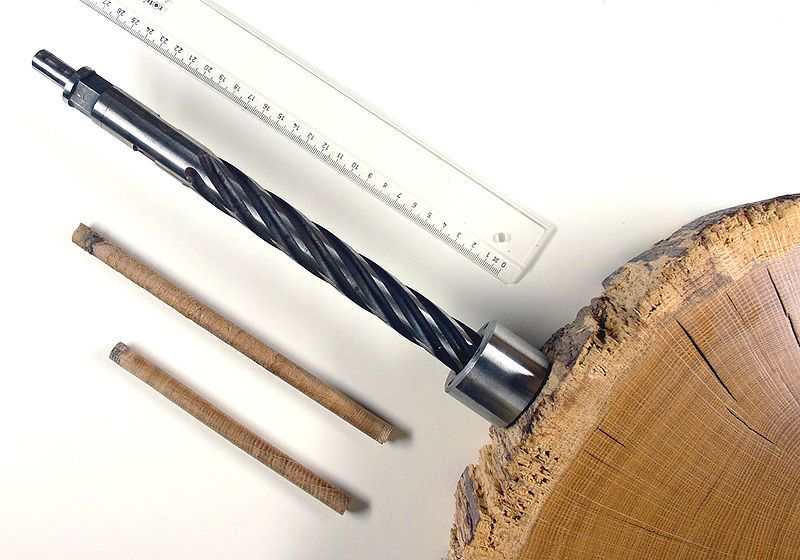Why an Astronomer Turned to Trees to Try to Solve a Celestial Mystery
Andrew Ellicott Douglass’s theory of sunspots and climate was wrong, but he still pioneered the science of tree-ring dating
/https://tf-cmsv2-smithsonianmag-media.s3.amazonaws.com/filer/ab/72/ab726d7c-6690-4a6d-8626-b828086432b5/treering.jpg)
Dendrochronology is the study of tree rings as a way to understand past events. And it’s a tool scientists use for a lot of purposes, thanks to an insightful astronomer named Andrew Ellicott Douglass, born on this day in 1867.
Douglass spent the early part of his career working with astronomer Percival Lowell at the Lowell Observatory. But, like many others in the astronomical community, he doubted Lowell’s controversial (and false) ideas about Martian civilizations. After leaving Lowell, Douglass went off to have his own crazy (and useful) idea. Today, the field he developed provides important historic climate information going back more than 4,500 years.
Historian Donald McGraw explains the genesis of Douglass’s insight: after splitting with Lowell, he was on a trip when he noticed something. Douglass wrote: "In the descent our surroundings changed from pine forest to desert on account of decreasing altitude, because altitude controls the amount of rainfall, and rain controls the tree growth. If this happens in terms of location, why shouldn't something happen to the tree in terms of time?"
“It was not an original idea,” writes McGraw: “it had been suggested for centuries that the effects of weather...might be recorded by tree rings.” But Douglass, after this insight, was the first to take the idea and "finally develop a viable science of tree-ring dating," McGraw says.
Douglass's interest was in solar flares. He believed that sunspots were linked to changes in the Earth's climate. He had good records of sunspots dating to the 1600s, but no way to cross-reference those records with weather patterns, Esther Ingliss-Arkell writes for io9. The answer, he believed, could be found in tree rings.
That theory never panned out, but in the course of his research he invented a whole new discipline that has applications in both the sciences and humanities. By 1936, writes Encyclopedia Britannica, he became the first-ever professor of dendrochronology.

Even before that, writes the University of Arizona, where Douglass was for a time acting president, other scientists were sending him “hundreds” of tree samples in hopes that they could be dated. These samples were the foundation of the world’s first tree-ring collection for the purposes of dendrochronology, writes the university. It’s housed at the UA Laboratory of Tree-Ring Research, which opened in 1937.
Dendrochronology has proven to be an important interdisciplinary pursuit that’s helped researchers of climate, history and the environment, among other disciplines. “Virtually all societies use wood in some fashion,” UA’s Ron Towner told PBS. “And so, that provides us with materials that we can tree-ring date.” That makes dendrochronology essential for archaeology, too, as well as the study of historic climate change.